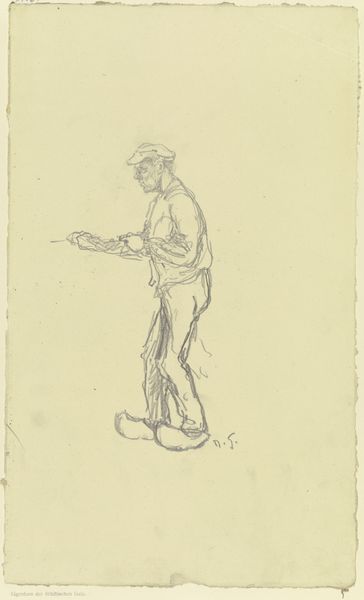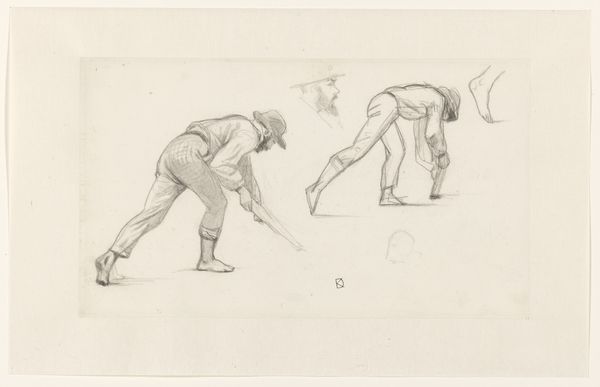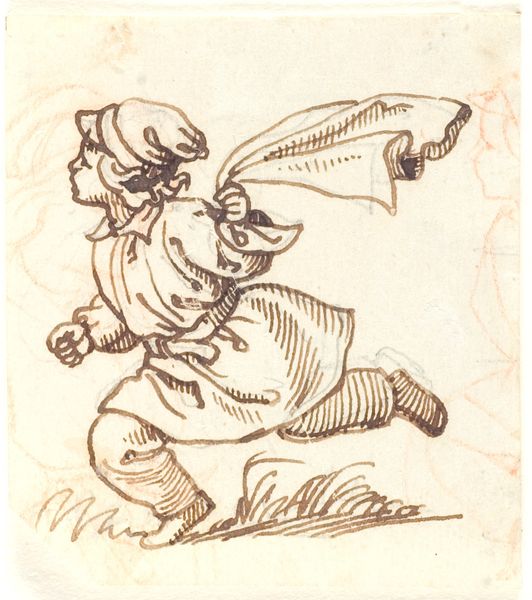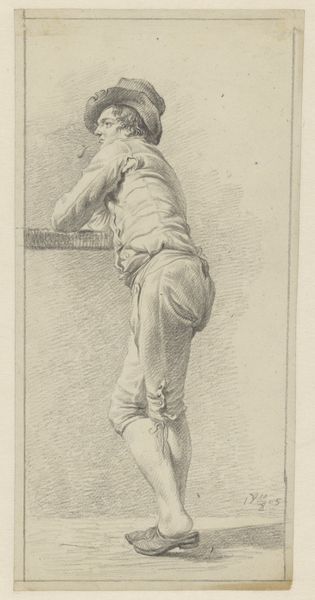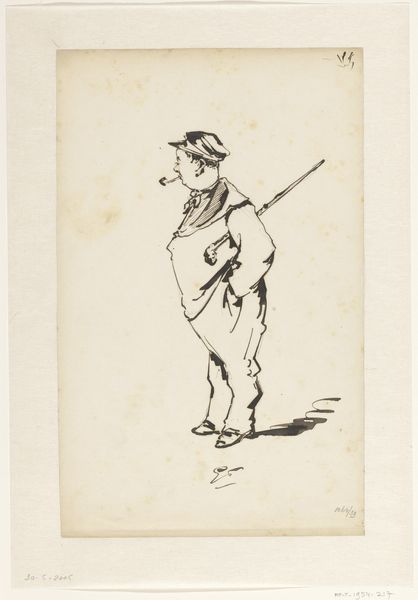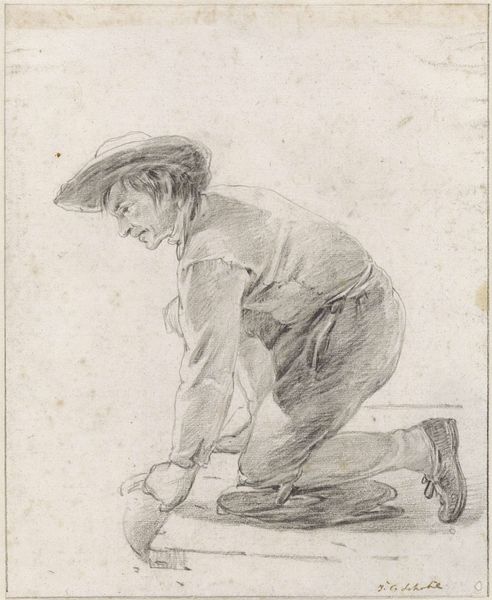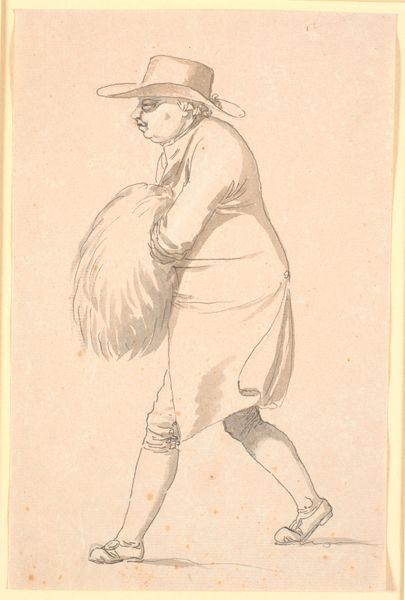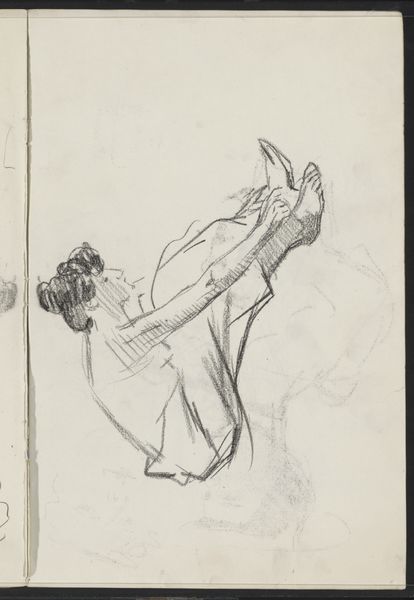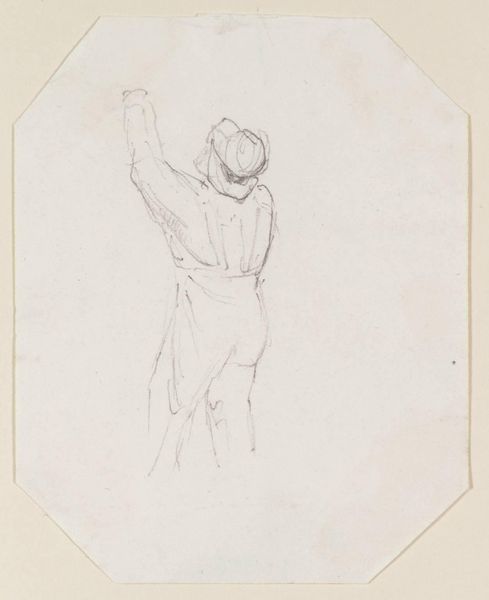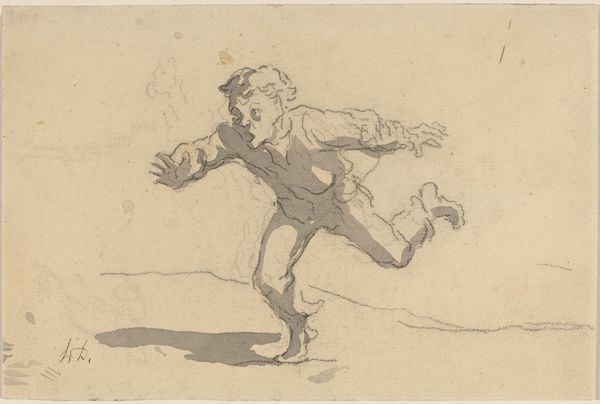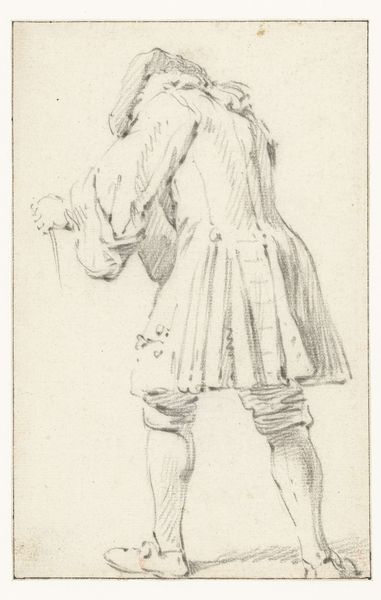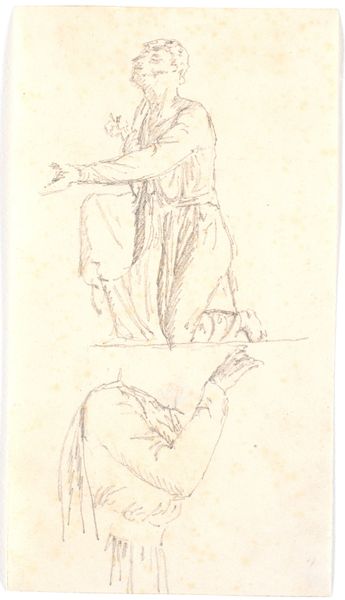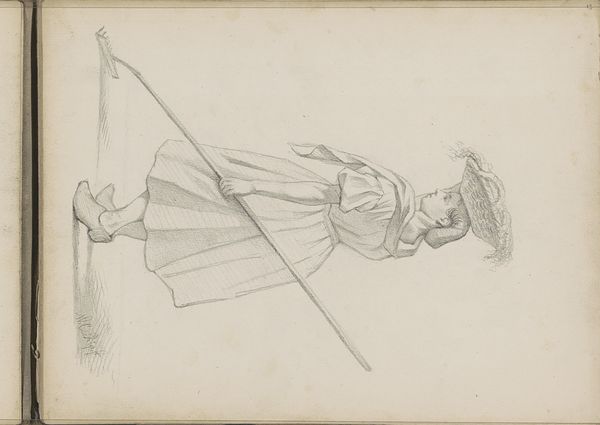
Dimensions: 108 mm (height) x 141 mm (width) (bladmaal)
Curator: We're looking at "Siddende mand der trækker en strømpe på," or "Seated Man Pulling on a Stocking" by Nicolai Abildgaard, created sometime between 1743 and 1809. It’s part of the collection at the SMK, Statens Museum for Kunst. Editor: My first impression is one of swift movement, like a fleeting moment captured in ink. The man's pose is quite intimate, very immediate in its feeling of physical effort and strain. Curator: Absolutely. Abildgaard was a leading figure in the Danish Romanticism, deeply engaged with Neoclassical ideals but with an undercurrent of expressive emotion. He headed the Academy, shaping an entire generation's aesthetic sensibilities in Denmark. And drawing, particularly quick figure sketches like this, was a core part of academic training. Editor: Looking closer, you can see the sketch quality in the line work, it is all about efficiency and immediacy of materials. There's a real economy in how he suggests volume and form with these quick strokes of pen and ink. I’m struck by how accessible that makes it, that process. He makes something graceful out of the everyday. Curator: Precisely. Figure studies like these allowed artists to hone their skills and explore anatomical accuracy and the study of the human form in preparation for history painting, and also portraiture, the artist worked across these categories, engaging with classical forms and romantic themes. It is work from his training as well as his mature work. Editor: What fascinates me is thinking about the context of making: what type of pen was he using? The materiality of ink on paper, especially the absorbency of that period, adds a layer of historical depth. We can trace something of Abildgaard's movements and actions, can imagine that process as labor and see something intimate and material through his efforts, like glimpsing something immediate across these distances of time. Curator: Thinking about art's place in society then, these drawings also offered a democratizing effect to audiences outside court and salon circles in their time as printmaking emerged in concert with sketching practices and allowed artworks to exist at various levels in culture, reaching audiences through new kinds of exchange. Editor: A fascinating intersection of skill, labor, material and circulation indeed. It's a lovely thing, thinking about it, now that we have considered how art practices shift and how history affects process in this artwork.
Comments
No comments
Be the first to comment and join the conversation on the ultimate creative platform.
